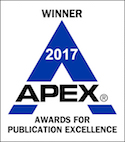The ERISA consultants at the Retirement Learning Center Resource regularly receive calls from financial advisors on a broad array of technical topics related to IRAs, qualified retirement plans and executive compensation arrangements. A recent call with a financial advisor from Washington, DC is representative of a common inquiry related to making changes to a safe harbor 401(k) plan. The advisor asked:
“What changes, if any, can an employer make to a safe harbor 401(k) plan during the plan year, while maintaining safe harbor status?”
Highlights of Discussion
Sponsors of safe harbor 401(k) plans[1. IRC §§ 401(k)(12) or 401(k)(13) and/or 401(m)(11) or 401(m)(12), and 403(b) plans that apply the IRC § 401(m) safe harbor rules pursuant to IRC § 403(b)(12).] have a limited ability to alter their plans mid-year without jeopardizing their safe harbor status. Any change must be one the IRS views as “permissible” and, oftentimes, employees must receive notification and have a new deferral election opportunity.
Notice 2016-16 provides that a mid-year change to a safe harbor plan or to a plan’s safe harbor notice does not violate the safe harbor rules merely because it is a mid-year change, if:
- the plan satisfies the notice and election opportunity conditions, if applicable; and
- the change is not a prohibited mid-year change as listed in Notice 2016-16.
Permissible Changes
According to the notice, permissible mid-year changes include:
- increasing future safe harbor non-elective contributions from 3% to 4% for all eligible employees;
- certain increases to matching contributions adopted at least three months before the end of the plan year;[2. Adopted at least three months before the end of the plan year, made retroactively effective, revocation of payroll period allocation, and new notice and election period apply.]
- adding an age 59½ in-service withdrawal feature;
- changing the plan’s default investment fund;
- altering the plan rules on arbitration of disputes;
- shifting the plan entry date for employees who meet the plan’s minimum age and service eligibility requirements from monthly to quarterly; and
- adopting mid-year amendments required by applicable law (for example, newly effective laws).
Changes 1-4 require an updated notice and an additional election period, as explained next.
Notice Requirement
When required, sponsors must provide an updated safe harbor notice that describes the mid-year change and its effective date within a reasonable period before the effective date of the change. Providing the notice 30-90 days before the effective date is deemed reasonable. If is it not possible for the plan sponsor to distribute the updated safe harbor notice before the effective date of the change, it must provide the notice as soon as practicable, but not later than 30 days after the date the changes is adopted.
Election Requirement
When required, sponsors must give each notified employee a reasonable period of time to change his or her cash or deferral election after receipt and before the effective date of the change. A 30-day election period is deemed reasonable. However, if it is not possible to provide the election opportunity before the effective date of the change (e.g., retroactive plan amendment), then the election opportunity must begin as soon as practicable after the notice date, but not later than 30 days after the date the change is adopted.
EXAMPLE
Plan M is a traditional 401(k) matching safe harbor plan operated on a calendar year. The match is calculated on a per payroll-period basis.
A mid-year amendment is made Aug. 31, 2018, to: (1) increase the safe harbor matching contribution from 4% to 5%; and (2) change from a payroll-period match to a full-plan-year match. Both changes are retroactively effective to Jan. 1, 2018.
Due to the retroactive effective date of the change, the sponsor cannot provide an updated notice and give an additional election opportunity to employees prior to the Jan. 1, 2018, effective date. On Sept. 3, 2018, the first date that an updated notice and additional election opportunity can practicably be provided, the sponsor distributes an updated notice that describes the increased contribution percentage and gives an additional 30-day election period starting Sept. 3, 2018. The mid-year change is a permissible change, and notice and election requirements are met.
Conclusion
Sponsors of safe harbor plans often wonder if they can make changes to their plans mid year. The answer is yes, provided any change is of the permissible variety, and notice and election requirements are met.
"Case of the Week" is the winner of an APEX Award for Publication Excellence for 2017.
Any information provided is for informational purposes only. It cannot be used for the purposes of avoiding penalties and taxes. Consumers should consult with their tax advisor or attorney regarding their specific situation.
©2018, Retirement Learning Center, LLC. Used with permission.
Footnotes

